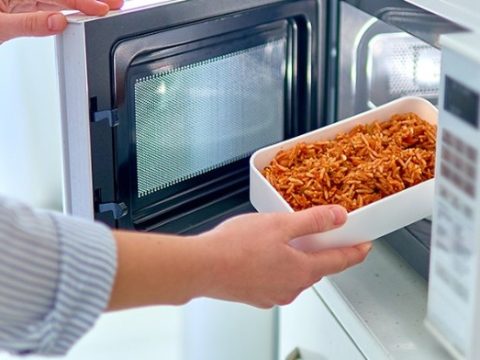Microwave-Safe Cookware: What Materials You Can Use with Confidence
Cooking with a microwave is not only efficient but also energy-saving. Microwaves can use up to 80% less energy and cook up to 75% faster than a conventional electric oven for single-serve meals.
How Microwaves Work and Why They’re Safe
A microwave oven generates electromagnetic waves that are reflected within its metal interior and absorbed by food. These waves agitate water molecules in the food, generating heat and cooking the meal. Because the energy only excites water molecules, your food does not become “radioactive” or chemically altered—microwave cooking is safe when used properly.
Why Choosing the Right Cookware Matters
Using unsuitable containers can lead to melting, cracking, chemical leaching, fire hazards, or damage to your microwave. Always check that your dishes are labeled “microwave safe” before heating.
How to Identify Microwave-Safe Containers
Look for the universal microwave symbol—often three wavy lines—or the words “Microwave Safe” on the bottom of the dish or its packaging. If in doubt, avoid using it.
Microwave-Safe Materials
Ceramic and Porcelain
Ceramic and porcelain bowls without metallic trim are excellent for microwaving. Avoid any with metallic paint or gilded edges to prevent sparks.
Heat-Resistant Glass
Borosilicate or tempered glass containers (e.g., glass baking dishes) handle rapid temperature changes safely. Standard table glasses are less reliable under high microwave heat.
Specialty Microwave Plastics
Only plastics marked “microwave safe” are suitable. They must be BPA-free to prevent harmful chemicals from leaching into your food. Discard any single-use or non-microwave-safe plastics.
Stainless Steel Inserts (Without Lids)
Certain stainless steel containers designed specifically for microwave use can be safe—always follow manufacturer instructions and omit any metal lids or trims.
Materials to Avoid
- Aluminum foil, cans, or metal utensils
- Plastic wrap and disposable plastic tubs (unless explicitly microwave-safe)
- Melamine and polystyrene (foam) plastics
- Any dish with metallic paint or gilding
Safe Microwave Practices
- Vent steam by leaving a microwave-safe lid slightly ajar.
- Pierce skins of potatoes, sausages, or fruits to prevent bursting.
- Stir and rotate food midway to eliminate cold spots.
- Allow food to rest briefly after heating to let heat distribute evenly.
- Clean spills immediately with a damp cloth to avoid smoke and odors.
By selecting the right cookware and following these guidelines, you can enjoy the convenience of microwave cooking without risk to your dishes, your appliance, or your health.


